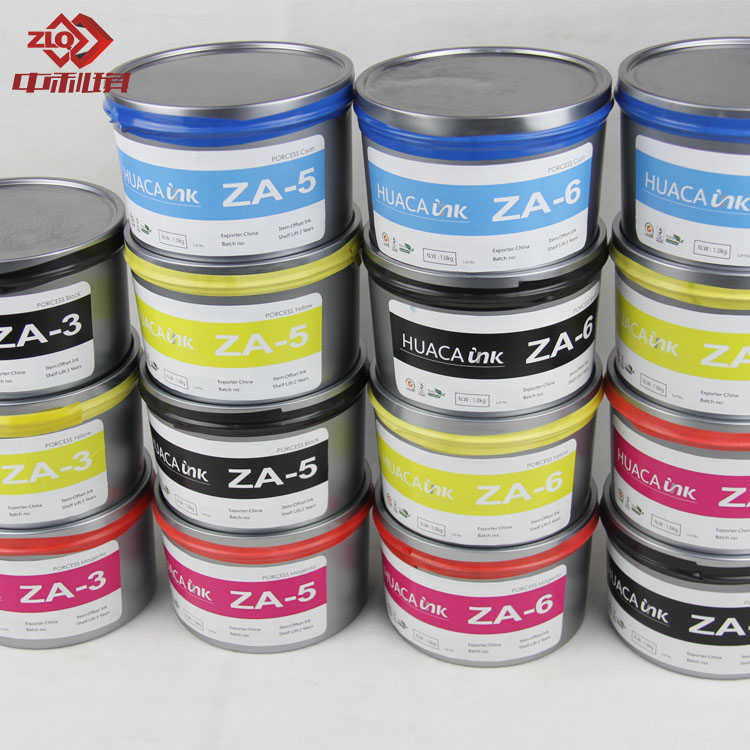
Introduction
In plastic packaging printing, the adhesion of ink is the key factor to ensure that the printed pattern will last. With its high adhesion, offset printing ink can achieve firm pattern and text printing on the plastic surface. This article will explore in depth the mechanism of achieving high adhesion of offset printing ink and its application on plastic packaging.
Mechanism of achieving high adhesion of offset printing ink
Ink formula design
Ingredient selection: The formula of offset printing ink contains ingredients such as resin, pigment, solvent and additives. Resin is the main contributor to ink adhesion. By selecting resin with good adhesion performance, the adhesion of ink on the plastic surface can be enhanced.
Additive addition: Adding an appropriate amount of adhesion enhancer, such as surfactant and coupling agent, to the ink formula can further improve the adhesion performance of the ink. These additives can improve the wettability and adhesion of the ink to the plastic surface.
Surface treatment technology
Corona treatment: Plastic surfaces usually have low surface energy, which makes it difficult for ink to adhere. Corona treatment can increase the polarity and surface energy of the plastic surface, thereby improving the adhesion of the ink.
Plasma treatment: Plasma treatment is a more sophisticated surface treatment technology. Through the action of plasma, polar groups can be introduced into the plastic surface to improve the adhesion of the ink.
Flame treatment: Flame treatment uses high-temperature flames to heat the plastic surface for a short time, changing its surface structure and chemical properties, thereby improving the adhesion of the ink.
Curing technology
UV curing: UV offset ink is cured by ultraviolet light, which can achieve rapid drying and curing of the ink in a very short time. During the UV curing process, the photoinitiator in the ink produces free radicals under ultraviolet light, which triggers the cross-linking reaction of the resin, forms a firm coating, and improves the adhesion of the ink.
Thermal curing: For some special applications, thermal curing technology can be used to cross-link the resin in the ink by heating to form a firm coating and improve the adhesion of the ink.
Examples of the application of offset printing ink in plastic packaging
Food packaging
Application: food plastic bags, plastic bottles, plastic boxes, etc.
Features: The application of offset printing ink in food packaging needs to ensure the safety and adhesion of the ink. By selecting environmentally friendly inks that meet food contact standards and using appropriate surface treatment and curing technology, you can ensure that the printed pattern adheres firmly to the food packaging.
Daily chemical packaging
Applications: shampoo bottles, shower gel bottles, cosmetic bottles, etc.
Features: Daily chemical packaging usually requires high-quality pattern printing on smooth plastic surfaces. Corona treatment or plasma treatment can improve the adhesion of the plastic surface, combined with UV curing technology to ensure the durability and wear resistance of the ink on the daily chemical packaging.
Industrial product packaging
Applications: lubricating oil barrels, chemical product bottles, etc.
Features: Industrial product packaging needs to have good weather resistance and chemical resistance. By selecting inks with high adhesion and chemical resistance and using appropriate surface treatment and curing technology, you can ensure that the printed pattern on the industrial product packaging is durable and does not fall off.
Pharmaceutical packaging
Applications: medicine bottles, medicine boxes, medical device packaging, etc.
Features: Pharmaceutical packaging has high requirements for the safety and adhesion of inks. By selecting environmentally friendly inks that meet pharmaceutical standards and using appropriate surface treatment and curing technology, it is possible to ensure that the printed pattern adheres firmly to the pharmaceutical packaging, thereby improving the safety and reliability of the product.